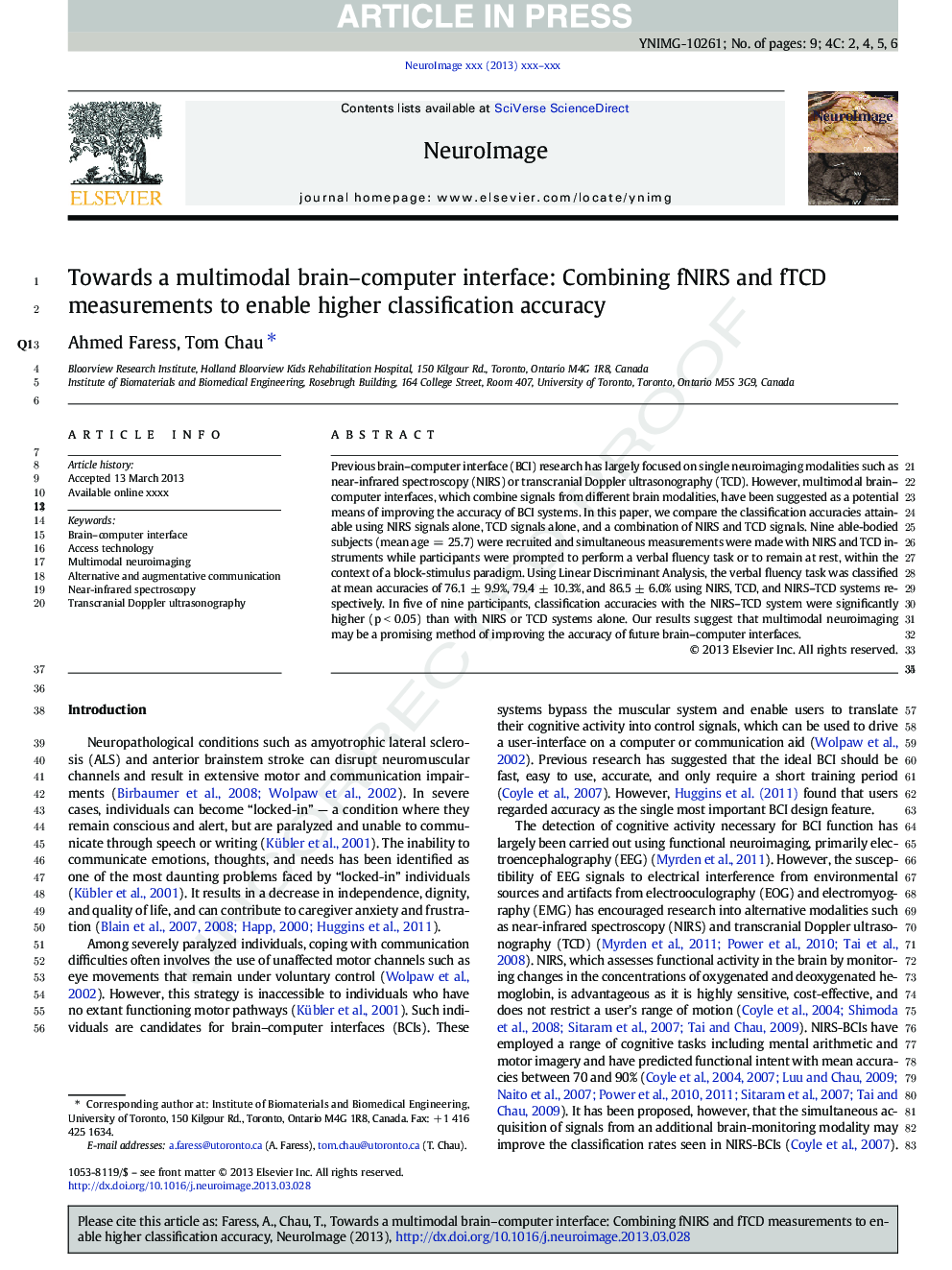| Article ID | Journal | Published Year | Pages | File Type |
|---|---|---|---|---|
| 6029604 | NeuroImage | 2013 | 9 Pages |
Abstract
Previous brain-computer interface (BCI) research has largely focused on single neuroimaging modalities such as near-infrared spectroscopy (NIRS) or transcranial Doppler ultrasonography (TCD). However, multimodal brain-computer interfaces, which combine signals from different brain modalities, have been suggested as a potential means of improving the accuracy of BCI systems. In this paper, we compare the classification accuracies attainable using NIRS signals alone, TCD signals alone, and a combination of NIRS and TCD signals. Nine able-bodied subjects (mean age = 25.7) were recruited and simultaneous measurements were made with NIRS and TCD instruments while participants were prompted to perform a verbal fluency task or to remain at rest, within the context of a block-stimulus paradigm. Using Linear Discriminant Analysis, the verbal fluency task was classified at mean accuracies of 76.1 ± 9.9%, 79.4 ± 10.3%, and 86.5 ± 6.0% using NIRS, TCD, and NIRS-TCD systems respectively. In five of nine participants, classification accuracies with the NIRS-TCD system were significantly higher (p < 0.05) than with NIRS or TCD systems alone. Our results suggest that multimodal neuroimaging may be a promising method of improving the accuracy of future brain-computer interfaces.
Keywords
Related Topics
Life Sciences
Neuroscience
Cognitive Neuroscience
Authors
Ahmed Faress, Tom Chau,
